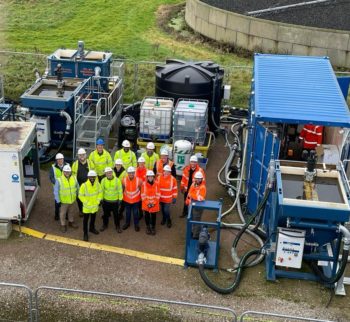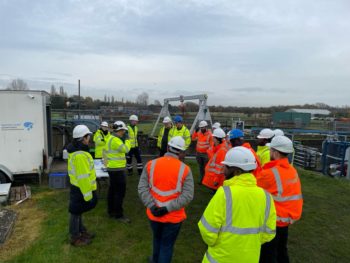Alternative approaches to phosphorus removal on rural wastewater treatment works
Amount awarded: £2,836,698
Led by: United Utilities
Partners: Southern Water, Thames Water, University of Portsmouth, Power & Water, Evergreen, Hydro Industries, Kolina
Project completed: March 2025
The Alternative Approaches to Phosphorus removal at rural wastewater treatment works (Alt-P) project has investigated a range of solutions in support of UK water companies faced with the challenge of phosphorus water quality drivers and the need to reduce dependence on metal-based coagulant dosing.
Through the delivery of three work packages the project consortium have successfully investigated a range of electrocoagulation (EC) systems, natural coagulant (NC) and reactive media solutions with varied outcomes. By operating demonstration plants at Woolton WwTW (Liverpool) and West Marden WwTW the project team have gained detailed technical understanding of the different approach for phosphorus removal and the site specific requirements of the technologies. We have answered key questions faced by the water industry regarding operational resilience, carbon footprint and our impacts on rural communities.
Our project involved the following:
- Work Package 1: Side-by -side, 15 month, trial of four EC systems and a baseline, ferric sulphate dosed, system to investigate the operational and maintenance requirements of EC systems in their different formats including power use, operator input and equipment use rates.
- Work package 2: Comparison of natural coagulants and ferric sulphate dosing to investigate the potential to reduce the us of metal based coagulants for phosphorus removal. Laboratory investigations followed by on-site trials of the most successful natural coagulants.
- Work Package 3: Understanding of requirements for successful phosphorus removal using reactive media and provision of an industry best practice guide to try and avoid repeated trials of this particular technology across the water industry.
Our EC trials showed that there are clear differences between supplier equipment and that water companies are able to vary the approach to EC depending on site specific requirements and operational constraints. The EC also varied in capability, power usage and the levels of operator input.
The NC trials, in the laboratory and at pilot scale, were very successful and have provided water companies with the necessary confidence to move forward to full scale adoption based on the ability to removal phosphorus and reduce the carbon footprint of operations.
We have provided a clear guidance document as an outcome from work package 3 which can be used by all water companies planning to trial or adopt reactive media at full scale.
The Alt-P project has been delivered to the agreed timescales and budget. The outcomes of the work packages are already being put to use within remaining AMP7 and future AMP8 schemes. Several areas of enquiry remain including how best to go about combining alternative approaches investigated within this programme. Discussions between water companies are ongoing regarding how best to complete further collaboration and maximise benefits.
—
Resources
For more information on Alternative Approaches to Phosphorus Removal, take a look at the following resources:



